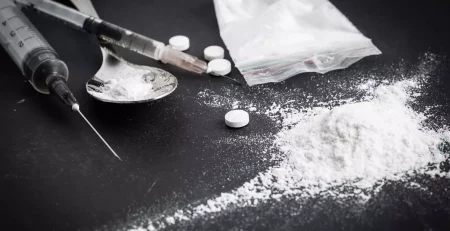Fentanyl Overdose
The Exploding Risk and Realities of Overdose Due to Fentanyl
Fentanyl is currently the most dangerous substance on the illegal drug market. The overdose totals for 2021 topped those of 2020, putting the total well over the 100,000 mark, closing in on diseases like diabetes, stroke, and heart disease.
Recent releases state that estimated totals for 2022 are at an astounding 147 overdose deaths per day. It’s difficult to verify this information until the year concludes and all statistics are officially compiled and counted, but if this is true, this will put the number of deaths attributed to opioid abuse at well over 300,000.
While it’s difficult to believe these numbers would mark the most significant single-year increase in overdose deaths and double the record-holding year of 2021, it can’t be ruled out as a possibility. Is there any possibility of relief from this deadly drug?
Keep reading to find out more about fentanyl overdose and effective forms of fentanyl rehab near you in New Mexico!
What Is Fentanyl?

What is fentanyl? Fentanyl is an opioid drug that has been found to contain serious side effects and should not be used without a doctor’s approval. The drug is most commonly prescribed to patients in severe pain, but it can also be obtained illegally on the black market.
Typically physicians prescribe it in patches and lollipops, and only patients with the gravest diagnosis receive it. It’s reserved to keep individuals comfortable during the final days of a terminal illness.
Certain pharmaceutical corporations and physicians have come under heavy scrutiny for overprescribing fentanyl. A recent variation of the drug, a fentanyl inhaler, was pulled from the shelves following a string of deaths. However, the pharmaceutical industry was never the main driving force in the fentanyl epidemic, as it’s always been a black market issue.
It’s often mixed with other drugs, such as heroin to create a more potent form of the drug. Fentanyl can be deadly even in small doses and has led to a wave of record deaths across the United States.
Is Fentanyl Addictive?
Fentanyl is considered to be an very addictive drug. As with all opioids, people who use fentanyl often become dependent on it and may find it difficult to stop using it even if they want to. This makes fentanyl addiction particularly dangerous because users may not realize how much they are using and may continue using it even if it is causing them harm.
24 Hour Detox and Rehab Treatment – Call Now!
What Happens When You Overdose on Fentanyl?
When you overdose on fentanyl, you may experience feelings of euphoria, extreme relaxation, and even hallucinations. In some cases, people may also experience seizures or coma. If untreated, fentanyl overdose can quickly lead to death.
It only takes a minimal amount of fentanyl to overdose, and any method of ingestion can bring on an emergency overdose situation. Sniffing, smoking, and injecting the drug put users at risk, as there is no safe way to use fentanyl. The most rapid method of ingestion is IV use, and symptoms progress the fastest during this route. Symptoms usually appear in the following order:

- Their pupils will appear extremely small or “pinned out.” The skin may turn pale and intense sweating, or a clammy look may ensue.
- Individuals may appear to be out of it and talk nonsense or incoherently. Their eyes may be open, but they can be awake but unresponsive. This is a bad sign, and at this point, preparations should be made to respond to an overdose.
- Individuals will appear groggy and fall asleep or “nod out.” They may fade in and out of this state until finally fully succumbing to the power of the drug and remaining unconscious.
- After completely losing consciousness, the lips usually turn blue, followed by the skin taking on a blueish color.
- You may hear the victim make a snoring or snorting sound. This is them attempting to breathe. Because their brain is shutting down, they’re losing their ability to breathe involuntarily.
- They may drool or vomit slightly at this point and completely stop breathing. If Narcan isn’t present, the victim must receive mouth-to-mouth to continue circulating oxygen in their bodies.
Mouth-to-mouth must be continued until paramedics arrive if there is hope for the individual to live. What ends up causing death during the overdose is a lack of oxygen to the brain. When victims go unconscious, the brain shuts down because of lack of oxygen, the organs fail, and they don’t wake up.
Even when someone is unconscious, the brain is still alive and will continue to survive with a steady flow of oxygen. If Narcan isn’t available, literally performing the act of breathing for the victim is the difference between life and death.
24 Hour Fentanyl Addiction Treatment Options
Fentanyl Overdose and the Availability of Narcan
Narcan availability is a hot topic in the medical industry and society. The opioid crisis has brought about a nationwide discussion about the use of Narcan and what should be done to ensure that everyone in the United States, especially those most vulnerable, such as the elderly and people with chronic illnesses, has access to it.
There is currently a shortage of Narcan in the United States. The good news is that more states are making it available, and there have been efforts to create a national stockpile. However, this leaves many communities without access to it.
In states without Narcan availability via doctors and pharmacies, several strategies ensure that individuals who overdose receive help. One method is through naloxone distribution programs. These programs provide individuals with the opioid antagonist drug naloxone so they can reverse an overdose and potentially save the victim’s life.
Representatives will establish routes or advertise their location, passing out Narcan kits for anyone who shows up and requests it. Many times, individuals can receive clean needles and other items.
Another strategy is the use of fentanyl test strips. These strips allow heroin users to test their drugs before injecting them, with the primary goal being the detection of fentanyl and a reduction in overdoses.

While highlighting the presence of fentanyl in a user’s heroin isn’t likely to stop them from using it, it does alert them to the presence of the drug, allowing them to take precautions before blindly obtaining their fix. These methods are known as harm-reduction and have been a scorching topic among the public and in Congress.
Does Harm Reduction Help or Hurt?
Many individuals opposing harm-reduction methods argue that it encourages drug use. While this could be true, it begs another question: Have there been any effective methods to curb drug use otherwise? If there is no useful plan or approach that puts a dent in the number of drug users in America, it comes to the point of making the tough decision of continuing to fight a losing battle or finding ways to soften the blows.
At this point, it becomes less about stopping the number of drug users and more about saving as many lives as possible. The leak that was the initial stages of the opioid epidemic has now turned into a complete dam-burst, with no true repair method on the table for discussion.
This is an issue is plaguing emergency workers during the opioid epidemic, and currently receiving a large amount of attention from various city and government officials. With the spread of fake Percocet 30s containing fentanyl, often called blues, the risk of overdose is even higher, with a variable dosing in each pill it really is a gamble with every pill taken.
Emergency Workers Experiencing Accidental Fentanyl Overdose
Emergency officials around the country are growing concerned regarding police officer and paramedic exposure to fentanyl, leading to accidental overdose for many of these workers. Because first responders are dispatched to so many calls involving fentanyl, their risk of overdose increases exponentially, leaving many wondering what can be done to help mitigate their risk of a fentanyl overdose.
First, it’s essential to know precisely how these overdoses are triggered. Typically, it’s through skin absorption after physically handling or contacting the drug with their bare hands. This can come from handling someone overdosing after removing drugs from their hands, wiping a table in the house of someone overdosing, or even through the clothes of someone overdosing if they’ve spilled the substance on themselves.
Because of these risks, emergency workers should always wear nitrile gloves before handling any overdose. Using soap and water is vital for removing any potential contamination from the skin. It’s worth noting that hand sanitizer should not be used, as it can increase the skin’s absorption of the drug.
Cases have also been reported of exposure through the air. First responders must wear ventilators and not just simple masks in these cases. Accidental inhalation can happen in situations where individuals on a scene have tossed the drug in the air in a possible effort to destroy evidence before officers arrive.
Get Immediate Help For Fentanyl at Icarus
Potential Solutions for Repeated Fentanyl Overdose
As overdose numbers continue to swell, it’s unavoidable that EMS workers run into the same individuals with substance abuse issues who overdose repeatedly. This raises questions about how to handle these individuals and what route to take to help them.
This becomes another situation of harm reduction and dealing with an issue that’s difficult to avoid. EMS workers in many areas are now instructed to leave repeat overdose, or any overdose victim, with additional doses of Narcan (if available) and literature regarding what to do during and after an overdose.
The problem with fentanyl overdose is that once someone experiences this issue once, it becomes easier for them to overdose subsequent times, especially during a small window. Many EMS services give victims information regarding treatment or rehab programs available in their area in hopes of turning one person’s life around. However, many of these calls seem to be falling on deaf ears.
Users who fail to rectify their substance abuse and overdose challenges are doomed to deal with the long-term effects of fentanyl, which provide grim symptoms and a potential death sentence.
What Are the Long-Term Effects of Fentanyl Use?
Long-term use of fentanyl can have significant consequences on your health. According to the National Institute on Drug Abuse (NIDA), long-term exposure to opioids can cause changes in your brain that make you more likely to develop substance abuse disorders in the future. Additionally, long-term use of opioids can lead to increased respiratory problems because of depressed breathing and the damage opioids do to the body’s various organ systems.
While many of the long-term effects of fentanyl exposure are largely unknown, they may include damage to the brain and spinal cord. Repeated exposure to fentanyl may also lead to increased rates of suicide, mental health issues, and criminal activities to support the continued use of the drug.
Finding a Rehab for Fentanyl Overdose

Seeking treatment for fentanyl overdose is one of the most effective ways to combat this epidemic, at least on a personal level. Only through understanding and education can anyone break free from the chains of addiction. How do you ever expect to beat your substance abuse disorder if you can’t understand it?
At Icarus Behavioral Health, our counselors and psychiatrists are expert-trained in providing mental health and substance abuse education. In addition, getting to the core of substance abuse normally requires treating the mental health disorder that’s existed as the driving force behind the addiction. If clients fail to receive treatment for the mental health challenges at the core of substance abuse, rehab only continues to be a treatment of the side effects and not the actual condition itself.
Types of treatment that have been effective at treating fentanyl use disorders include cognitive-behavioral therapy, dual-diagnosis treatment, various forms of talk therapy, and holistic treatment. In addition, group sessions with peers and family also provide clients an outlet that provides therapeutic value.
Clients’ families must be encouraged to become active in recovery, especially during the post-treatment stage. This helps promote long-term recovery and helps hold clients accountable while in the “real world.”
Up to 100% of Costs Covered by Insurance – Call Now!
At Icarus Behavioral Health, Recovery from Fentanyl is Possible
At Icarus Behavioral Health, we understand the best way to avoid fentanyl overdose is through fentanyl recovery. Our compassionate staff is dedicated to providing clients with the help, education, and tools they need to overcome their substance abuse disorder challenges and experience a return to a standard way of living.
For questions regarding our program and ways, we can help you experience recovery, contact a member of our expert care staff today.











